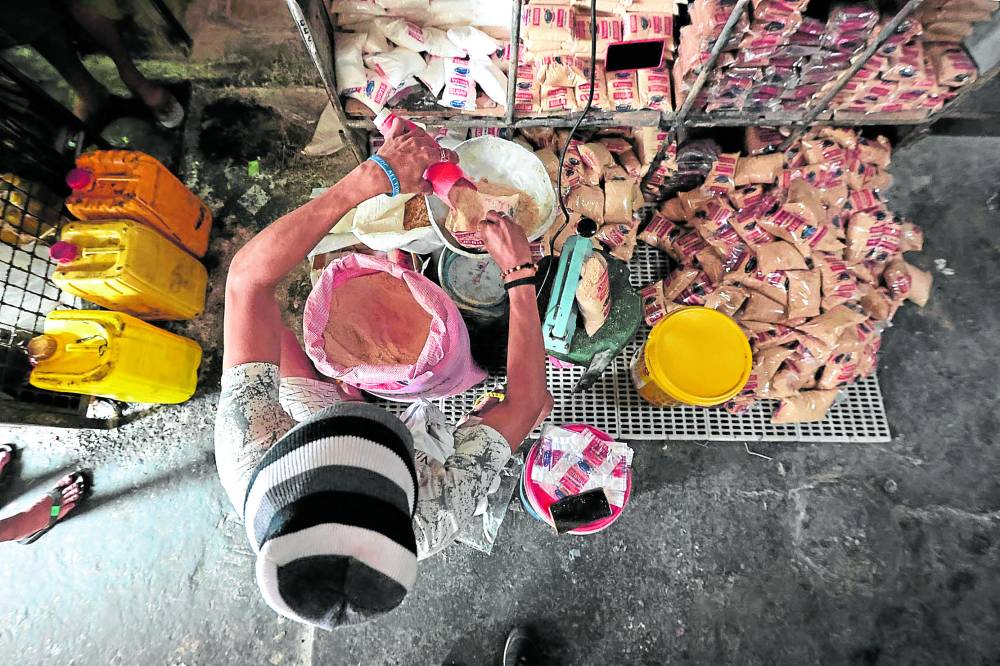
BITTER TRUTH A stall helper repacks sugar at Visayas Avenue Public Market. Food prices have remained stubbornly high, says UN report. —Inquirer File Photo
Food inflation remains a problem for both national governments and households across the world as the factors that caused fast-rising prices last year, such as Russia’s invasion of Ukraine, are still influencing the world market, according to the United Nations (UN).
In their latest monthly report, the Agricultural Market Information System (Amis) which is administered by the UN’s Food and Agriculture Organization, said the decrease in world market prices of staple foods during the second half of 2022 has, at best, slowed domestic food price inflation, which remains stubbornly high in most parts of the world.
“Food affordability thus remains a challenge at both the macroeconomic level (countries’ ability to pay their food import bills) and at the household level (increased prices in local currency for imported food and energy),” the Amis said.
Overall inflation in the Philippines has risen—largely on account of food and energy items—from 3 percent in March to 8.1 percent in December 2022, which state economists believe is the peak from which it will gradually slow down.
The Bangko Sentral ng Pilipinas (BSP) expects inflation in January to be within the range of 7.5 percent to 8.3 percent.
This means the BSP is actually looking at 7.9 percent—lower than December’s—but the upperside forecasting margin gives inflation a fair chance of reaching yet another high.
Staple foods
According to Amis, prices for food commodities remain high by historical standards, across all main components of the FAO Food Price Index. These include cereals such as rice and wheat, meat, dairy, vegetable oils and sugar.
Amis also said that markets for staple foods continue to be tight and price instability for these crops is likely to intensify with any major supply shock.
In addition, supply problems in and from Ukraine pose a potentially worse impact if not merely continually helping disrupt the international supply chain.
Further, Amis said fertilizer prices have fallen from their peaks but also remain high, despite recent drops in the prices of natural gas, which is a major input for nitrogenous fertilizer as well as an energy source for the production process.
“High fertilizer costs are depressing farm profitability and fertilizer usage, which might impact crop yields, including of rice,” the agency said.
“Global rice production dropped somewhat in 2022, and prospects of lower stocks have led to an increase in rice prices at the end of last year,” it added.
Amis said that adverse climatic conditions in the southern hemisphere such as prolonged drought conditions in Argentina are adding to price pressures with reduced output of wheat and other crops.
“Nonetheless, without any additional major disruptions, global food shortages are not expected to emerge in 2023,” the agency said.